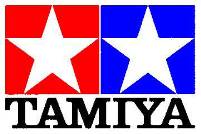
Police Minis.
Many of Britain’s constabularies, and indeed other nations too, used the Mini in a multitude of ways, as have the Armed Forces Policing units. The vans and travellers were good for road accident investigation or transporting police dogs and handlers and the humble saloon proved to be a useful patrol and arrest vehicle. They became very popular with the public, who at that time had great respect for the Police, as they were a recognisable car seen patrolling the streets and because they featured on the television in programmes such as “Z-Cars”, at that time shown in black & white making the blue and white cars look much more like black and white Pandas; a term of endearment that is still part of the collective memory today. However, it could also be a term meaning Patrol AND Arrest (P-AND-A) which is still in use as a policing method today.
The colour scheme arose from a simple idea of making the cars stand out from the general traffic. This was achieved by purchasing a blue car and a white car then swapping the doors bonnet and boot lids over to create the multiple coloured cars. Of course, this method soon gave way to officially painted vehicles which differed from force to force but generally remained blue and white, although some forces used black, white or cream overall. There were some black and white ‘Pandas’ used in some forces but they were few and far between.
Interiors were usually simple and black seems to have been the most common colour used. Differences with Police Minis would be the zip in the headlining providing access to the roof box fittings and wiring, two radio mountings and often sparse dashboards with items removed to make way for the radios and other necessary police equipment.
External additions were the obvious roof box and blue light, air horns sometime mounted on the roof box or the front bumpers, Police lettering on the sides, front and rear, and often towing hooks sometimes with additional front ones too.
The Lancashire Constabulary are considered the first to have used the whimsically named Panda cars, in their case they were blue and white Ford Anglias rather than Minis, to do local patrols and support the ‘Bobby on the beat’. They were an extension of the role, but in some cases became a replacement for the foot patrols, the Mini proved the perfect car as it was cheap, economical to run, quite nippy and relatively unobtrusive, just as the Morris Minor was too. Neither the Morris Minor nor the Morris “Mini” Minor were ever intended to be pursuit cars, their speed wasn’t high and the forces already had high end sports cars that fulfilled that role. They weren’t for rapid response work either, just to speed up and ease all the humdrum roles for which vehicular transport was better than a walking Police officer or the Horse drawn transport of the past.
Panda cars were also a way of maintaining a public presence, boosting the image of the Police as helpful, friendly and always available. In rural and larger suburban areas where Police officers had patrolled on foot, by bicycle, or on a motorcycle, the Panda car proved a more effective means of policing. It was as quick, or quicker, without tiring the officers, and could carry more equipment as needed. They also provided an element of protection from the weather and improved communication because of the two-way radio.
The urban environment was changing and the way it was policed needed to change too. Sprawling housing estates, high-rise flats and the new motorway networks gave the criminal element their own home turf that the Police couldn’t know as well as those who lived there, and communication from city to city made organized crime much further reaching. The police needed nippy local transport to get around tight inner cities and housing estates and if possible, something that could keep up if the thieves where going ‘intercity’. Enter the Mini Cooper, the car that could fulfil the dual roles of local Panda and pursuit car when needed.
These days patrol cars are seldom called Pandas and their appearance has changed considerably, now they are a plain white body with fluorescent stripes or the Battenburg markings. When these cars are called Pandas, it is a term to identify a normal usage car by a non-emergency trained police driver. This differentiates them from the Area Car or the Immediate Response Vehicle which have specially trained drivers for emergency response work.







The model is built from a Tamiya kit. Tamiya’s 1/24 scale Morris Mini Cooper 1275s Mk.1 kit (#24039) was initially released in 1983 followed by the 1967 Monte Carlo Rally winning car kit #24048 in 1984, a club racing version, kit #24130 in 1993 and finally the very rare Austin Mini Cooper 1275S Mk1 in 2001 kit # 24235. These kits are excellent and much sort after because of the vast array of Minis that can be made from them. If you are looking for a later MkII or MkIII the you need one of the Fujimi kits which are similarly good kits and equally desirable for the same reason as the Tamiya kit.
This model was built in October 2019 to be a part of our “60 years of the Mini and All things Issigonis” display for the 2019 Scale Model World weekend.
Rod built the model straight from the box with a few minor modifications, like the scratch built blue light and altered indicators. It is painted with Halfords acrylic car spray paints, over Halfords plastic primer, for the exterior and Humbrol enamel paints and Revell, Citadel and Deco-Art acrylic paints applied by brush.
